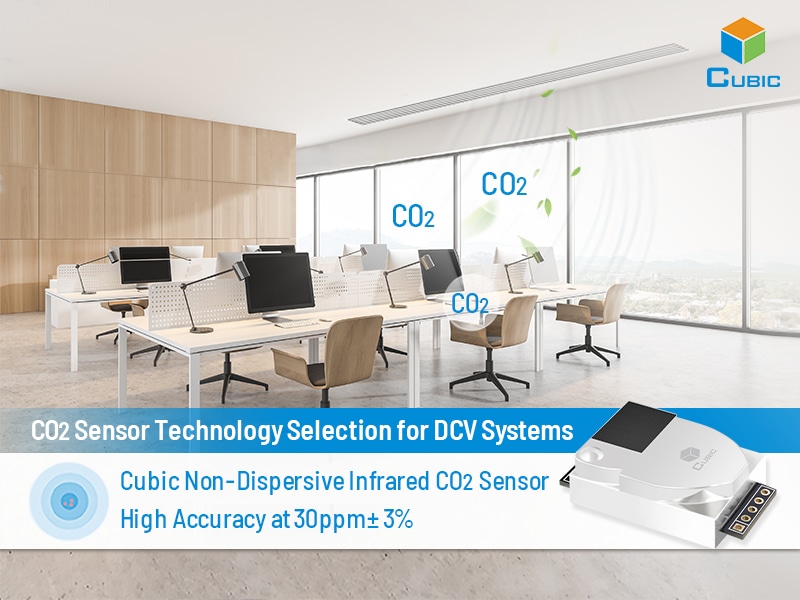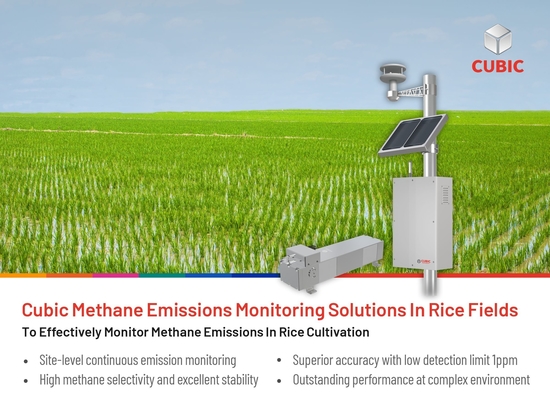
#Industry News
Carbon Dioxide Gas Sensor Technologies for Demand Control Ventilation Systems
Carbon Dioxide Gas Sensor Technologies for Demand Control Ventilation Systems
Demand Control Ventilation (DCV) systems play a pivotal role in maintaining indoor air quality and improving energy efficiency. Typically, DCV systems will adopt CO2 sensors to continuously and accurately monitor indoor CO2 concentration levels in real-time. When it is detected that the indoor CO2 concentration exceeds the set threshold, the DCV systems will automatically increase the air ventilation volume to bring fresh air into the room to reduce the CO2 concentration. When it is detected that the indoor CO2 concentration is within the normal range, DCV systems can stop or reduce the fan operation, thereby saving energy. Through effectively transferring accurate data of indoor CO2 concentration, the CO2 sensors in DCV systems can realize intelligent air ventilation control to maintain indoor air quality and improve energy efficiency at its best. Therefore, it is important to adopt highly accurate and fast response CO2 sensors for precise indoor air ventilation control in time.
Currently, the widely known technologies for measuring CO2 concentration are NDIR (Non-Dispersive Infrared) Technology and PAS (Photoacoustic Spectroscopy) Technology.
How does NDIR (Non-Dispersive Infrared) CO2 Sensors Work?
NDIR CO2 sensors work relying on the principle of infrared absorption by CO2 based on Lambert-Beer's Law: the higher the CO2 concentration, the more infrared energy will be absorbed. The infrared source directly emits the infrared light and passes through the gas chamber to the optical filter before reaching the detector. The filter allows only the 4.26μm wavelength, corresponding to the absorption peak of CO2 gas, to pass through it. The detector measures the intensity of infrared light and converts it into an electrical signal. As the CO2 concentration in the gas chamber increases, less infrared intensity reaches the detector, resulting in a weaker electrical signal. CO2 concentration can be calculated based on the electrical signal.
How does PAS (Photoacoustic Spectroscopy) CO2 Sensors Work?
In PAS CO2 sensors, an infrared light source works periodically and emits light. The optical filter only allows 4.26μm wavelength light to pass and reach the chamber with CO2 gas. CO2 molecules periodically absorb the infrared light, which causes additional molecular vibrations, resulting in a pressure wave inside the chamber. The higher the CO2 concentration, the more light is absorbed, and thus the greater the amplitude of this acoustic wave becomes. A microphone inside the gas chamber measures the acoustic wave and then transfers it to an electrical signal, from which the CO2 concentration can be calculated.
To compare two technologies, PAS CO2 sensors have the advantage of capacity to optimize product size design to be very small, while NDIR CO2 sensors require a specific optical path design for gas absorption, which inherently limits their ability to achieve the compact size as small as PAS CO2 sensors.
However, in Demand Control Ventilation (DCV) systems, CO2 sensor product designed size is not an important aspect taken into consideration. To realize the high energy efficiency in DCV application is much more essential. Under this concern, to realize high-accuracy feature of CO2 sensors becomes very critical. From the perspective of highly accurate measurement, PAS CO2 sensors are limited in the principle to achieve the high accuracy target, because PAS technology requires a microphone inside the gas chamber, which makes PAS CO2 sensors are more susceptible to vibrations and changes in ambient temperature, potentially compromising the precision of the CO2 measurements. In the contrast, NDIR technology-based CO2 sensor is more adaptable choice to achieve highly accurate measurement of indoor CO2 concentration level. Based on the Non-Dispersive Infrared technology principle, NDIR CO2 sensors can achieve a remarkable level of accuracy of 30ppm+/-3%, across a wide temperature range, which makes NDIR CO2 sensors more suitable for DCV system application.
Cubic, as a leading manufacturer of gas sensors and gas analyzers, has devoted 20 years into NDIR optical technology development, and offers competitive complete CO2 sensing solutions for diverse applications.
For more about Cubic product information, please click on
https://en.gassensor.com.cn/IndoorCO2Sensors/list.html





